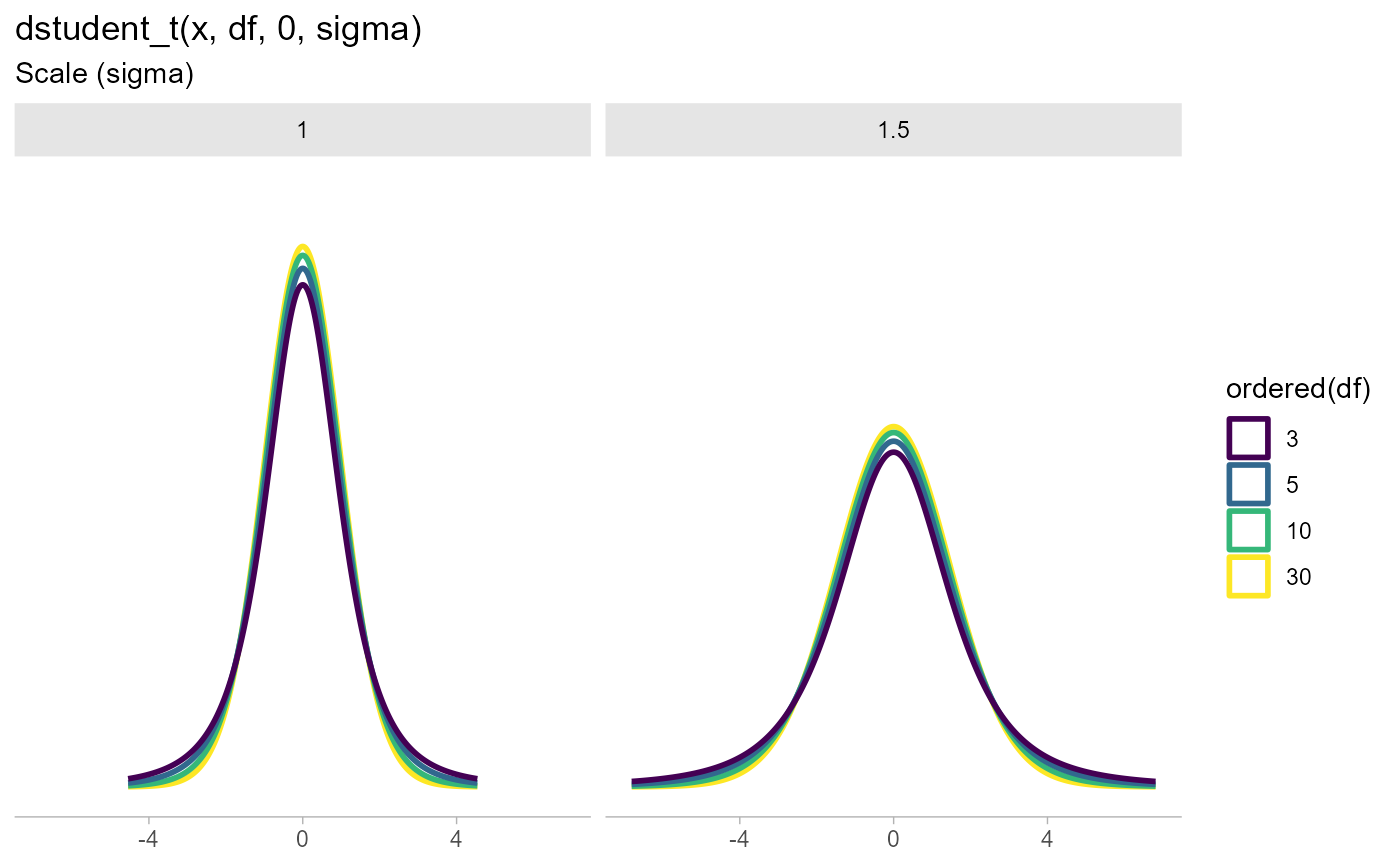Density, distribution function, quantile function and random generation for the
scaled and shifted Student's t distribution, parameterized by degrees of freedom (df),
location (mu), and scale (sigma).
Usage
dstudent_t(x, df, mu = 0, sigma = 1, log = FALSE)
pstudent_t(q, df, mu = 0, sigma = 1, lower.tail = TRUE, log.p = FALSE)
qstudent_t(p, df, mu = 0, sigma = 1, lower.tail = TRUE, log.p = FALSE)
rstudent_t(n, df, mu = 0, sigma = 1)Arguments
- x, q
vector of quantiles.
- df
degrees of freedom (\(> 0\), maybe non-integer).
df = Infis allowed.- mu
<numeric> Location parameter (median).
- sigma
<numeric> Scale parameter.
- log, log.p
logical; if TRUE, probabilities p are given as log(p).
- lower.tail
logical; if TRUE (default), probabilities are \(P[X \le x]\), otherwise, \(P[X > x]\).
- p
vector of probabilities.
- n
number of observations. If
length(n) > 1, the length is taken to be the number required.
Value
dstudent_tgives the densitypstudent_tgives the cumulative distribution function (CDF)qstudent_tgives the quantile function (inverse CDF)rstudent_tgenerates random draws.
The length of the result is determined by n for rstudent_t, and is the maximum of the lengths of
the numerical arguments for the other functions.
The numerical arguments other than n are recycled to the length of the result. Only the first elements
of the logical arguments are used.
See also
parse_dist() and parsing distribution specs and the stat_slabinterval()
family of stats for visualizing them.
Examples
library(dplyr)
library(ggplot2)
expand.grid(
df = c(3,5,10,30),
scale = c(1,1.5)
) %>%
ggplot(aes(y = 0, dist = "student_t", arg1 = df, arg2 = 0, arg3 = scale, color = ordered(df))) +
stat_slab(p_limits = c(.01, .99), fill = NA) +
scale_y_continuous(breaks = NULL) +
facet_grid( ~ scale) +
labs(
title = "dstudent_t(x, df, 0, sigma)",
subtitle = "Scale (sigma)",
y = NULL,
x = NULL
) +
theme_ggdist() +
theme(axis.title = element_text(hjust = 0))
